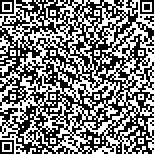杨永辉,熊华春,袁俊英,等.脑性瘫痪儿童独立行走年龄预后的列线图预测模型研究[J].中华物理医学与康复杂志,2023,45(10):922-927
扫码阅读全文

|
| 脑性瘫痪儿童独立行走年龄预后的列线图预测模型研究 |
|
| |
| DOI:10.3760/cma.j.issn.0254-1424.2023.10.012 |
| 中文关键词: 脑性瘫痪 独立行走 预测模型 |
| 英文关键词: Cerebral palsy Independent walking Prediction models |
| 基金项目:河南省医学科技攻关项目(LHGJ20200426);河南省医学科技攻关项目(RKX202202034) |
|
| 摘要点击次数: 3705 |
| 全文下载次数: 4128 |
| 中文摘要: |
| 目的 建立并验证针对脑瘫儿童独立行走年龄预后的列线图预测模型。 方法 采集脑瘫登记平台2016-2020年数据并建库,随机将70%脑瘫患儿纳入建模组,余30%患儿纳入验证组,对患儿性别、胆红素脑病、新生儿窒息、极低出生体重、早期早产、脑瘫分型、磁共振分类、2岁前粗大运动功能分级(GMFCS)、独坐年龄、2岁能否独坐、粗大运动功能评定-88(GMFM-88)A-E区评分、合并癫痫、智力障碍、视觉障碍及手术等因素进行COX单因素回归分析,将单因素回归分析筛选出的有效变量纳入COX多因素回归分析并建立针对脑瘫儿童独立行走的预测模型,通过绘制列线图展示结果。采用C统计量和校准曲线分别评估列线图的区分度及校准能力,采用净重新分类指数(NRI)评估列线图的净收益情况。 结果 共有807例脑瘫患儿纳入本研究,建模组共有565例,验证组共有242例。偏瘫型、双瘫型、不随意型及四肢瘫型患儿分别有93.96%、76.57%、25.49%和22.32%能实现独立行走。2岁前GMFCS评级、脑瘫分型、独坐年龄、智力障碍、早期早产等5个因素是影响脑瘫儿童独立行走预后的独立危险因素(P<0.05),1~6岁患儿的C统计量均>0.8,提示预测模型具有较好的区分度。校准曲线显示预测1~4岁脑瘫患儿独立行走概率与观察概率相符程度较高,预测5~6岁患儿独立行走概率较观察概率偏高。NRI数据提示列线图预测模型净收益不低于全因素模型。 结论 本研究通过建立并验证脑瘫儿童独立行走年龄预后列线图预测模型,为预测脑瘫儿童独立行走概率提供参考依据。 |
| 英文摘要: |
| Objective To establish and validate a model predicting the age at which a child with cerebral palsy will be able to walk independently. Methods Data spanning 2016 to 2020 were collected from the cerebral palsy registration platform to build a database. Then, 70% of the patients were randomly assigned to the modeling group, while the remaining 30% were reserved for validation. Factors such as gender, bilirubin encephalopathy, neonatal asphyxia, extremely low birth weight, early pre-term birth, cerebral palsy type, magnetic resonance classification, gross motor function classification (GMFCS) score before 2 years of age, independent sitting age, ability to sit independently at 2 years of age, sections A through E of the gross motor function measure (GMFM-88), epilepsy, intellectual disability, visual impairment and surgery were analyzed applying Cox univariate regression analysis. The variables highlighted by the univariate regression analysis were included in Cox multivariate regression analyses, and a prediction model for the independent walking of children with cerebral palsy was established. It is presented as a linear graph. The C-statistic and calibration curve were used to evaluate the graph′s discrimination ability and calibration. Net reclassification improvement (NRI) was used to evaluate the linear graph′s net benefit. Results A total of 807 cases were included in the study, with 565 and 242 in the model and validation groups, respectively. GMFCS score before 2 years of age, cerebral palsy type, independent sitting age, intellectual disability and early pre-term birth were found to be independent predictors of the age of independent walking. The C-statistics for 1-6 year-olds were all >0.8, indicating that the prediction model had good discrimination. The calibration curve showed that the predicted probability of independent walking at 1-4 years old was consistent with the observed probability, while the predicted probability of independent walking at 5-6 years old was higher than the observed probability. NRI suggested that the net benefit of the linear graph prediction model was not less than that of the full-factor model. Conclusion A linear model was developed which can usefully predict the age of independent walking for children with cerebral palsy. |
|
查看全文
查看/发表评论 下载PDF阅读器 |
| 关闭 |
|
|
|